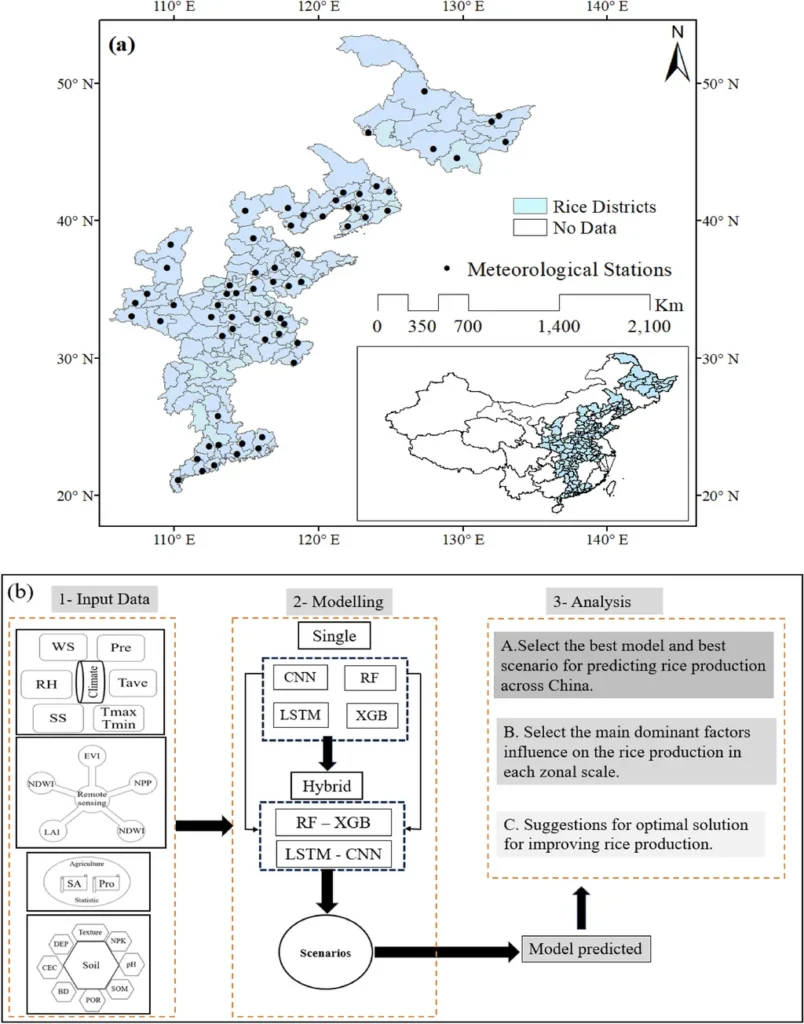In the heart of China’s rice bowl, the Huai River Basin, a groundbreaking study is reshaping how we think about water management in agriculture. Dr. Jin Qiuxiang, from the Yale-NUIST Center on Atmospheric Environment at Nanjing University of Information Science and Technology, has led a comparative analysis of machine learning algorithms to calculate paddy field evapotranspiration (ETa), a critical factor for sustainable water use in agriculture. The research, published in ‘Guan’gai paishui xuebao’ (translated as ‘Journal of Glaciology and Geocryology’), offers promising insights for the energy sector, particularly in optimizing water resources and improving energy efficiency in agricultural practices.
Evapotranspiration, the process by which water is transferred from the land to the atmosphere by evaporation from the soil and other surfaces and by transpiration from plants, is a key component of the water cycle. Accurate estimation of ETa is essential for efficient water management, especially in rice cultivation, which is water-intensive. Traditional methods of calculating ETa often fall short in terms of accuracy and efficiency, which is where machine learning comes into play.
Dr. Jin and his team used data from the Shouxian National Climate Observatory in Anhui Province, collected in 2019. They analyzed temporal ETa variations and their driving factors, then estimated ETa using three machine learning algorithms: BP neural networks (BPNN), random forests (RF), and support vector regression (SVR). The results were compared with in-situ observations to evaluate their performance.
The study found that as the rice crop grew, its ETa increased and then decreased, with the maximum and minimum values observed in the panicle initiation-heading stage and the seedling-three leaf stage, respectively. Incoming shortwave radiation (K↓) showed the closest correlation with ETa and was the most important factor influencing it. Incorporating K↓ in the model improved the accuracy of all three machine learning algorithms, with the associated R2 increasing by 51.2% and RMSE reduced by 37.7%.
The random forest algorithm, which considers K↓, relative humidity (RH), and air temperature (Ta), was found to be the optimal model for calculating ETa. This model was more accurate than the FAO-recommended single crop coefficient model (FAO56 PM), despite using fewer input variables. The study also found that an automated machine learning framework (FLAML) performed even better, increasing R2 by 1.52% and reducing RMSE by 5.6% compared to the random forest model.
“This study demonstrates the potential of machine learning algorithms in improving the accuracy and efficiency of ETa estimation in paddy fields,” said Dr. Jin. “The use of automated machine learning frameworks like FLAML can further enhance the performance of these models, making them more robust and practical for real-world applications.”
The implications of this research are significant for the energy sector. Accurate estimation of ETa can help optimize water use in agriculture, reducing the energy required for irrigation and improving overall energy efficiency. This is particularly important in regions like the Huai River Basin, where water resources are under pressure due to intensive agricultural activities.
Moreover, the use of machine learning algorithms can provide real-time, data-driven insights into water use, enabling farmers and water managers to make informed decisions. This can lead to more sustainable agricultural practices, reducing the environmental impact of farming and contributing to the fight against climate change.
As Dr. Jin noted, “The integration of machine learning algorithms into agricultural water management practices can revolutionize the way we use and conserve water resources. This can have a profound impact on the energy sector, contributing to a more sustainable and resilient future.”
The research published in ‘Guan’gai paishui xuebao’ opens up new avenues for exploring the potential of machine learning in agriculture. It highlights the need for further research and development in this area, with a focus on improving the accuracy and efficiency of these models. As we move towards a more data-driven and technology-enabled future, the role of machine learning in agriculture is set to become increasingly important, shaping the way we farm and manage our natural resources.

